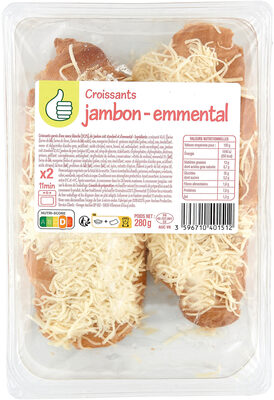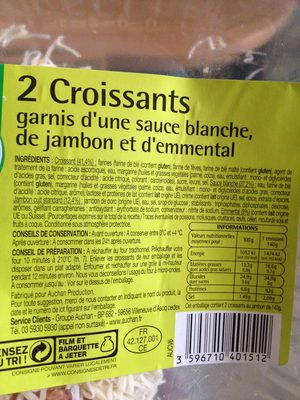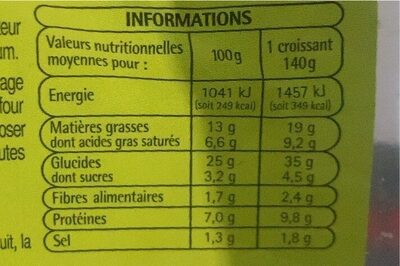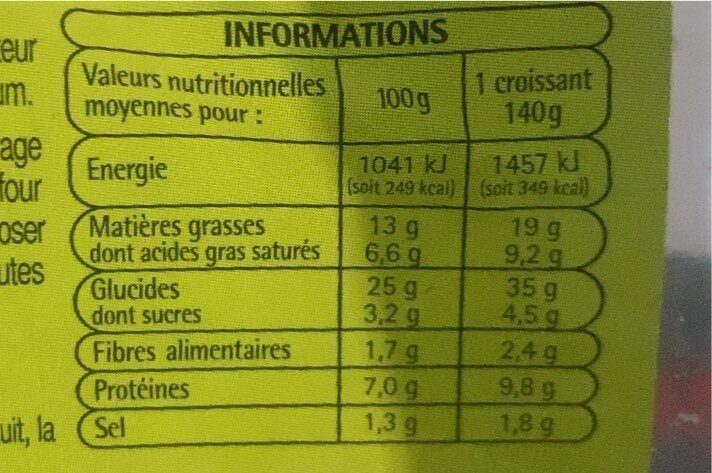Croissants jambon - emmental - Pouce - 0.28 kg
This product page is not complete. You can help to complete it by editing it and adding more data from the photos we have, or by taking more photos using the app for Android or iPhone/iPad. Thank you!
×
Some of the data for this product has been provided directly by the manufacturer AUCHAN APAW.
Barcode: 3596710401512 (EAN / EAN-13)
Common name: Croissants garnis d'une sauce blanche (37,2%), de jambon cuit standard et d'emmental
Quantity: 0.28 kg
Labels, certifications, awards: Nutriscore, Nutriscore Grade D
Traceability code: FR 42.127.001 CE - Mably (Loire, France), EMB 42127A - Mably (Loire, France)
Stores: Auchan
Matching with your preferences
Environment
Packaging
Transportation
Threatened species
Other information
Preparation: au four:réchauffer suivant les conseils de préparation avant de consommer le produit.Au four traditionnel : préchauffer 10 minutes à 210°C (thermostat 7). Enlever les croissants de leur emballage et les disposer dans un plat adapté. Enfourner à mi-hauteur pendant 11 minutes environ.Nous vous déconseillons l'usage du four à micro-ondes.
Conservation conditions: A conserver entre 0°C et +4°C.
Report a problem
Data sources
The manufacturer AUCHAN APAW uses Agena3000 to automatically transmit data and photos for its products.
Product added on by kiliweb
Last edit of product page on by org-auchan-apaw.
Product page also edited by openfoodfacts-contributors, roboto-app, teolemon, vaporous, yuka.VzdKYUxvVTRqZG9IaDhVYzJoQ0w0WXBKOXB5M1R6bXBjZGM3SUE9PQ, yuka.sY2b0xO6T85zoF3NwEKvlkFEUMfynROUHBfhm1GW382KIJnUbfxb6dnaDKs.








